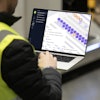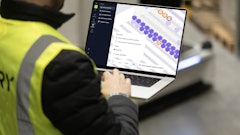
Manufacturers continue to feel the weight of ongoing labor shortages, with 90% reporting direct impacts on production. Yet, while half (49%) of manufacturers plan to use technology and automation to help combat labor shortages, only 39% are currently doing so. This gap doesn’t just slow down production — it increases pressure on current employees, putting productivity and morale at risk.
These and other findings come from the new Quickbase research report, The State of Manufacturing 2025: Navigating Technological Changes, examining the manufacturing sector’s struggles with the labor shortage, skills gaps, and managing change due to these factors.
Key Takeaways:
- Using responses from 536 manufacturing leaders in the U.S. and U.K., the report looks at the impacts to operations and productivity, especially as rising production costs and inflation and ongoing supply chain disruptions present an urgent need for technological transformation.
- Labor shortages remain a top concern for manufacturers, with 89% of Quickbase survey respondents reporting negative shop floor efficiency impacts due to a dearth of available workers.
- Additionally, an aging workforce and inadequate knowledge transfer – aka, “brain drain” - are creating a skills gap; 41% of manufacturers struggle to pass on knowledge from experienced workers to new hires, slowing down operations. This is leading some companies to increase wages to attract skilled talent (57% report doing so) or hire less qualified staff and invest in on-the-job training (29%), both of which can add costs to labor and prove unsustainable eventually. Instead, manufacturers can take advantage of technology and automation to combat these challenges, creating operational stability and closing gaps.
















![Pros To Know 2026 [color]](https://img.sdcexec.com/mindful/acbm/workspaces/default/uploads/2025/08/prostoknow-2026-color.mduFvhpgMk.png?ar=16%3A9&auto=format%2Ccompress&bg=fff&fill-color=fff&fit=fill&h=135&q=70&w=240)